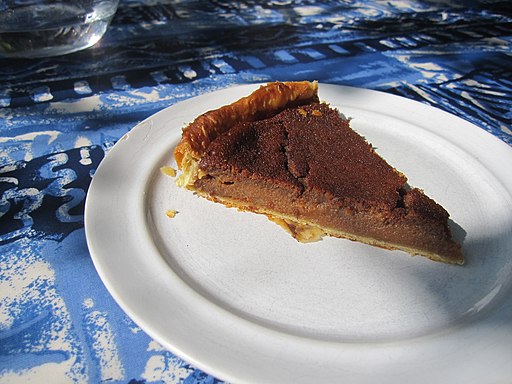
Swiss Food: Tarte à la Raisinée – Apple and Pear Molasses Pie
What is Swiss Raisinée?
The French-Vaudois word raisinée refers to a syrup or molasses made of the must of apples and pears. It was originally cooked in grape juice, thus the name — raisin means grape in French. Often called vin cuit, or “cooked wine,” it is in the form of a dark brown, viscous liquid. In still other parts of Switzerland, another concoction similar in consistency to jam and using the same ingredients is called cougnarde and probably dates back to at least the Middle Ages. Raisinée was used as a sweetener in many regions in Europe, and the tradition has lingered in Switzerland, especially in the cantons of Vaud, Fribourg and Neuchâtel. Today, it is mainly used for cakes and pies, and is not fermented, so it not technically a wine.
The tart itself has numerous names — raisinée, vin cuit (literally cooked wine), cougnarde and Biresaassa, depending on the location.
Recipe: Tarte à la Raisinée – Apple and Pear Syrup Pie
This recipe is inspired by Concert des Casseroles and translated with their authorization
- 200 g of flour
- 100 g butter
- 3 g of fine salt
- 15 g walnut or hazelnut nillon* (here a mixture in equal parts)
- 1 small egg (less than 60 g)
- 60 g white sugar
- 3 eggs
- 2 egg yolks
- 200 g double cream
- 150 g pear raisinée (click on link to see our recipe for making raisinée)
- Dough: Combine the butter and sugar. Add the beaten egg and walnut/hazelnut nillon, then flour, mix and form into a ball, then roll out or pat down to flatten. Wrap in plastic and chill for 30 minutes.
- Spread the dough on a sheet of baking paper and place it along with the sheet in a pie ring or pie pan. Shape the edges by pinching the dough between your thumb and forefinger. Prick the bottom and edges with a fork. Cool for 30 minutes to firm up and avoid sagging when cooking.
- Preheat oven to 180° C. Place baking paper and beans or ceramic beads on the dough to prevent it from swelling. Bake for 20 minutes: the dough should barely brown.
- Meanwhile, prepare the filling by mixing the eggs and yolks, the double cream and the raisinée.
- Remove dough from oven. Remove weights and parchment paper. Lower thermostat to 150°C.
- Pour the filling into the dough and cook for about 30 to 40 minutes. The filling must be taken when it is not too firm and must have a slightly caramelized smell. It will probably still appear liquid when it comes out of the oven, but do not prolong the cooking, as it gets much firmer while it is cooling.
|
|





















0 Comments